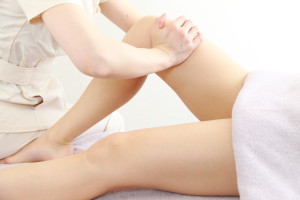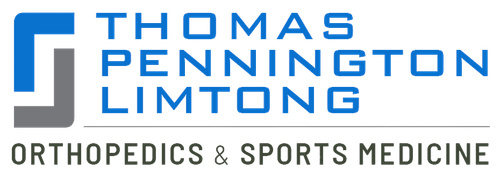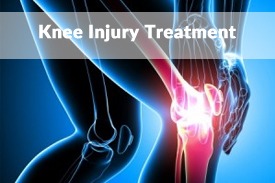Front Knee Pain
 Front or anterior knee pain refers to the pain occurring at the front of the knee, including the kneecap or patella. Patients may not be sure what is causing them front knee pain, but two of the common causes of this pain are patellofemoral pain and patella tendinitis or Jumper’s knee.
Front or anterior knee pain refers to the pain occurring at the front of the knee, including the kneecap or patella. Patients may not be sure what is causing them front knee pain, but two of the common causes of this pain are patellofemoral pain and patella tendinitis or Jumper’s knee.
It can sometimes become difficult to distinguish between the two types of pain, and on occasion, these two conditions may occur at the same time. Fabulous, focused, and board certified orthopedic surgeons at the Thomas & Bigler Knee & Shoulder Institute provide treatments for anterior knee pain to patients in Las Vegas, Nevada, and surrounding locations in this area of the country.
Patellofemoral Pain Syndrome
Patellofemoral Pain Syndrome (PFPS) is also known by other names such as as runners knee, chondromalacia patellae, anterior knee pain and patellofemoral joint syndrome. This generic term describes patella pain at the front of the knee.
Sinding-Larsen-Johansson Lesion
Sinding-Larsen-Johansson Lesion or syndrome is one of a group of injuries known as osteochondroses. This condition typically causes knee pain in children. Osgood’s Schlatter Disease is another similar injury. It is a chronic stress injury occurring at the bottom of the kneecap.
Jumpers Knee
Jumpers knee or patellar tendonitis occurs from overuse of the knee. It causes pain in the front of the knee, localized at a point towards the lower part of the kneecap. Too much running, jumping, or repetitive strain can cause inflammation or degeneration of the patella tendon.
Osgood Schlatters Disease
Osgood Schlatter disease or Osgood Schlatter lesion is a knee pain commonly occurring in children in the age group of 10 to 15 years. The condition was named after two physicians in 1903, Dr. Robert Osgood and Dr. Carl Schlatter.
Chondromalacia Patella
Chondromalacia patella (CMP) refers to damage occurring to the articular cartilage, which is the smooth hard cartilage under the kneecap.
Housemaids Knee
Housemaids Knee, clinically known as prepatellar bursitis or knee bursitis, refers to a swelling of the bursa. A small sack of fluid may occur at the front of the knee.
Patellofemoral Instability
In case of patellofemoral instability, the patient typically experiences the sensation of their kneecap giving away or feeling loose on movement of the knee.
Quadriceps Tendinopathy
Pain and inflammation of the quadriceps tendon may occur due to overuse of the knee. The tendon inserts into the top of the kneecap, and over a period of time it can result in degeneration of the tendon.
Infrapatella Bursitis
A bursa refers to a small sac of fluid, which performs the function of lubricating the movement between tendons and bone. Several bursas are present around the knee, which can sometimes become painful and inflamed.
Fat Pad Impingement
The infrapatella fat pad is also known as Hoffa’s pad. It is a soft tissue that lies beneath the kneecap which can get impinged causing knee pain.
When a patient experiences persistent or severe knee pain, they should consult with an orthopedic surgeon and receive appropriate treatment. Judicious, accomplished, and board certified orthopedic surgeons Dr. Steven Thomas and Dr. Gregory Bigler receive patients from Las Vegas, Nevada, and other suburbs and communities in this area of Nevada for knee and shoulder related injuries.
If you would like to schedule an appointment or learn more about the Knee and Shoulder Institute procedures & treatments performed by Las Vegas, Nevada board certified surgeons Steven C. Thomas, MD and Gregory T. Bigler, MD. call (702) 933-9393; Physical Therapy (702) 933-9393.


